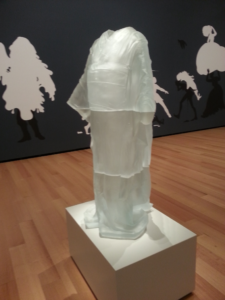Transcutaneous Vagal Nerve Stimulation to the Neck
Kristen Sparrow • September 15, 2017


Study showing that stimulation of the vagus nerve in the neck elicits the same brain activity as invasive (implanted) vagal nerve stimulation, or auricular vagal nerve stim. As patients and blog readers know, I study vagal response with HRV in the clinic in conjunction with acupuncture. But I’m keenly interested in noninvasive vagal nerve stimulation because it has the potential to reinforce the acupuncture treatments and be used at home, safely and inexpensively. My experience with transcutaneous ear stimulation is that it seems to help some people, but not all. Of course!! Cause this is physiology, not gravity… I will be trying this on myself and willing patients measuring HRV and clinical response.
Cutaneous Electrical Stim of Neck Vagal stim from Brain Stim Journal 9.14.17
Vagus nerve afferents can be accessed non-invasively via transcutaneous electrical stimulation of the neck.•
The regional brain activation elicited by the stimulation is comparable to that elicited by invasive VNS or by auricular VNS.•
Brainstem and forebrain regions activated by the stimulation include NTS, parabrachial area, insula, and primary sensory cortex.•
Deactivation was observed in the hippocampus and parahippocampus.
Access to Vagal Projections via Cutaneous Electrical Stimulation of the Neck: fMRI Evidence in Healthy Humans
Abstract
Background
Stimulation of the vagus nerve via implanted electrodes is currently used to treat refractory epilepsy and depression. Recently, a non-invasive approach to vagal stimulation has demonstrated similar beneficial effects, but it remains unclear whether these effects are mediated via activation of afferent vagal fibers.
Objective
The present study was designed to ascertain whether afferent vagal projections can be accessed non-invasively by transcutaneous electrical stimulation of the antero-lateral surface of the neck, which overlies the course of the vagus nerve.
Methods
Thirteen healthy subjects underwent 2 fMRI scans in one session. Transcutaneous electrical stimulation was applied for 2 min to the right postero-lateral surface of the neck during scan #1 (control condition, sternocleidomastoid stimulation: “SCM”) and to the right antero-lateral surface of the neck during scan #2 (experimental condition, non-invasive vagus nerve stimulation: “nVNS”). Two analyses were conducted using FSL (whole-brain and brainstem; corrected, p < 0.01) to determine whether nVNS activated vagal projections in the brainstem and forebrain, compared to baseline and SCM stimulation.
Results
Compared to baseline and control (SCM) stimulation, nVNS significantly activated primary vagal projections including: nucleus of the solitary tract (primary central relay of vagal afferents), parabrachial area, primary sensory cortex, and insula. Regions of the basal ganglia and frontal cortex were also significantly activated. Deactivations were found in the hippocampus, visual cortex, and spinal trigeminal nucleus.
Conclusion
The present findings provide evidence in humans that cervical vagal afferents can be accessed non-invasively via transcutaneous electrical stimulation of the antero-lateral surface of the neck, which overlies the course of the nerve, suggesting an alternative and feasible method of stimulating vagal afferents.
Keywords
Abbreviations
ABVN
fMRI
NTS
nVNS
SCM

